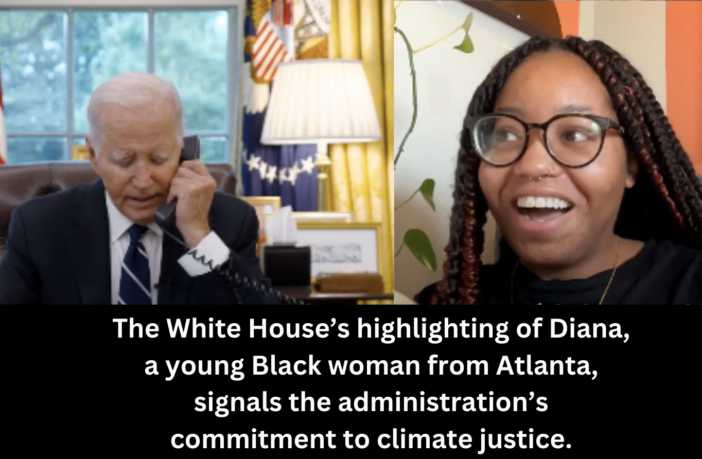The White House’s highlighting of Diana, a young Black woman from Atlanta, signals the administration’s commitment to climate justice.
By Willy Blackmore
Word in Black
When the Biden administration announced the creation of the American Climate Corps last month, it was heralded as a huge victory for the environmental left in the United States.
Here was an idea that was proposed as part of the Green New Deal, championed by the likes of Sen. Bernie Sanders during his 2016 presidential primary campaign, and continually advocated for by progressive climate organizations like the Sunrise Movement.
But as we pointed out when the Corps was announced, the Biden plan was missing one key component of the proposals for a federal green jobs program that directly inspired it: a specific focus on racial justice.
The response to the program has been massive, with 42,000 people submitting “interest forms,” which is more than twice the number of jobs that will be available in the initial cohort.
About two-thirds of those people are between the ages of 18 and 35. And when President Biden picked up the phone to call one young American who expressed interest in joining the ACC, it became clear that the White House is indeed thinking about climate justice: he spoke with Diana, a young Black woman from Atlanta.
In a video of the call posted Oct. 12 to the president’s social media accounts, Biden asks Diana not why she cares about climate change or some similarly broad question, but something more pointed: “Why is environmental justice so important to you?”
In this video posted on President Biden’s Instagram account on Oct. 12, the president chats with Diana, a young Black woman from Atlanta, about climate justice. (Image courtesy screenshot/Instagram)
As Diana explains in the video clip, she grew up in East Point and still lives on the south side of Atlanta, where there is a long history of heavy industry, and is now to numerous retail distribution centers — and the associated pollution.
She says three people in her family have bronchitis, including herself, and her brother has asthma. Knowing that living alongside that pollution by no means made it easier to have respiratory issues pushed her toward wanting to work on climate issues, she said.
With 42,000 people, there are going to be a variety of backgrounds and stories that led up to being interested in the ACC. But the fact that the White House picked Diana’s story to highlight is highly telling — and it’s now a young Black woman who is the public face of the American Climate Corps.
Willy Blackmore is a freelance writer and editor covering food, culture, and the environment. He lives in Brooklyn.



